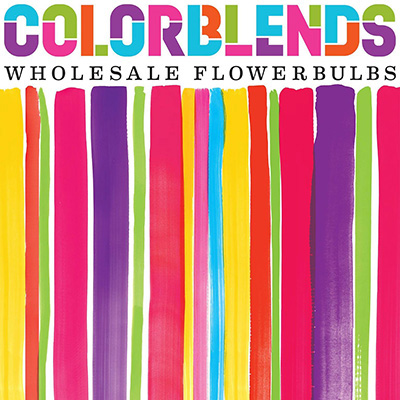Mark Konlock Images and Captions
Click on any image to enlarge and view slideshow. Return to Intro Page
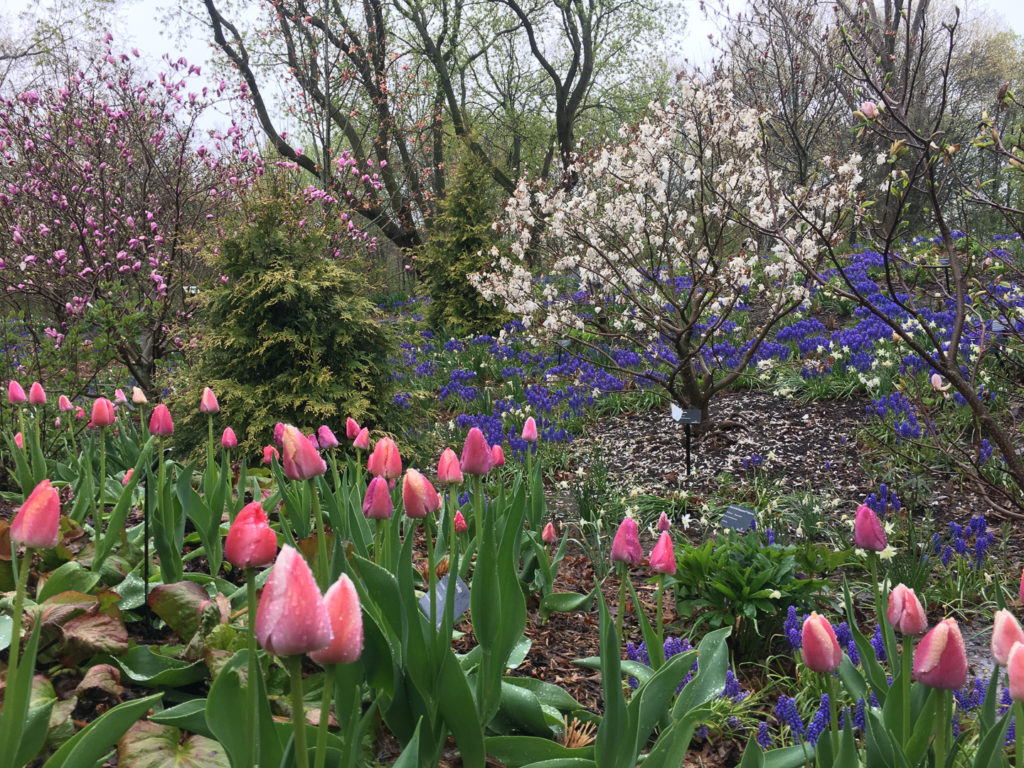
Layers of ColorA hillside landscape is glorious in spring when purple-pink tulips linked by a ribbon of electric-blue grape hyacinths bloom against a backdrop of magnolias with large flowers in purple-pink, pink-purple and white. "I like the layers of color and drama you get in relating spring-blooming bulbs to flowering trees and shrubs," says Mark Konlock, horticulture director of Wisconsin's Green Bay Botanical Garden. "The evergreens also act as backdrops to the tulips, making them stand out more prominently than they would against bare ground and mulch."
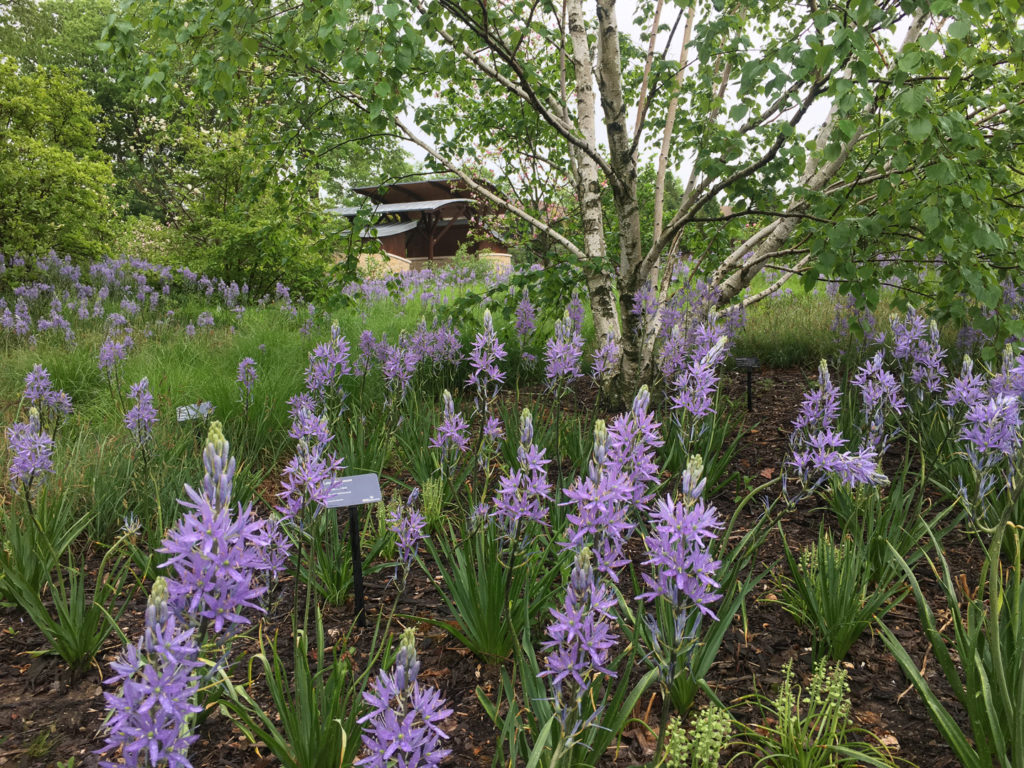
Plant Partners for a Damp SiteBlue-flowered Camassia, clumps of sedge and Himalayan birch trees all thrive in damp soil. In a sloped bed of sedges, Camassia adds flower power, while the textured white birch bark accentuates the purple-blue flowers. "It's a combination where the components mesh well, while upping the ante for one another," says Mark Konlock, horticulture director of Wisconsin's Green Bay Botanical Garden. "Mass plantings of bulb flowers and grasses can be used to lead the viewer's eye and create a grander sense of scale."
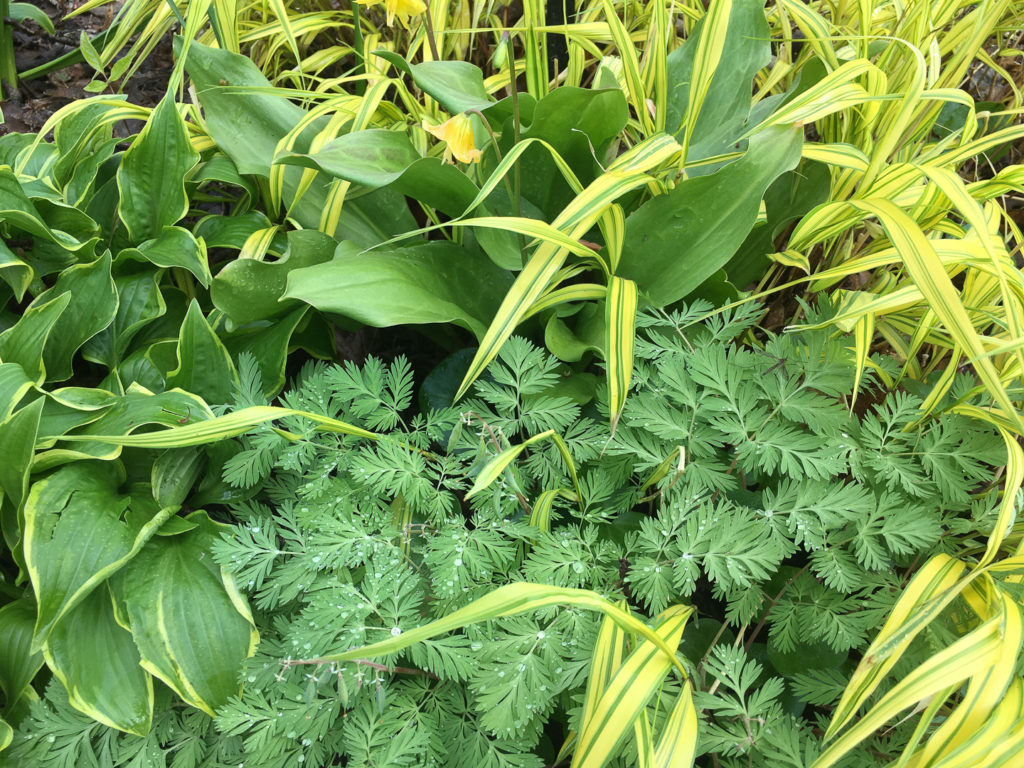
Vignette in Yellow-GreenThis four-plant partnership combines different foliage textures and colors, plus subtle reverse color echoing. Two spring ephemerals add a wildflower look to the mix: yellow-flowered trout lilies, followed by pale-pink Dutchman’s breeches. Two long-performing perennials add distinctive foliage, spring through fall: hosta and Japanese forest grass. "All four plants are suited to growing in damp, humus-rich soil in woodland settings with dappled light," says Mark Konlock, horticulture director of Wisconsin's Green Bay Botanical Garden.
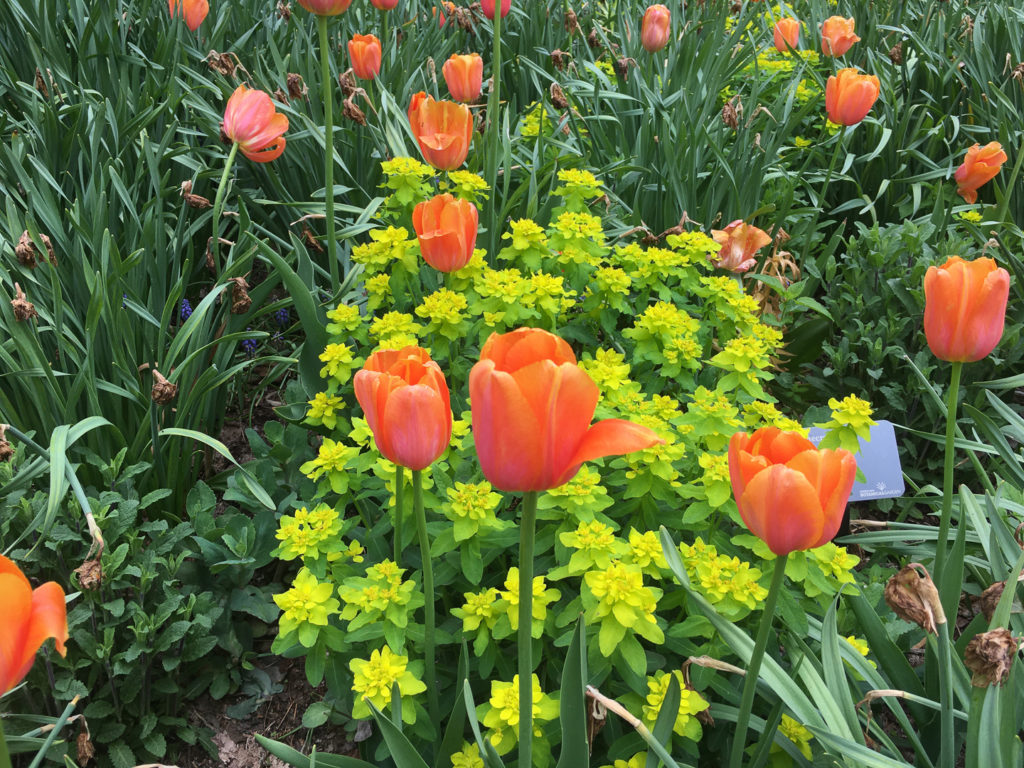
Color Contrast at WorkChoosing plant combinations is half the fun of gardening. Some combos work because plants complement one another. Others are based on contrast, as is seen in a terrific mix of salmon-colored Tulipa 'Dordogne' with chartreuse Euphorbia polychroma (mounded spurge). "Together, these two really light up a cloudy day," says Mark Konlock, horticulture director of Wisconsin's Green Bay Botanical Garden. After the tulips bloom and fade, Euphorbia polychroma carries on through summer and fall.
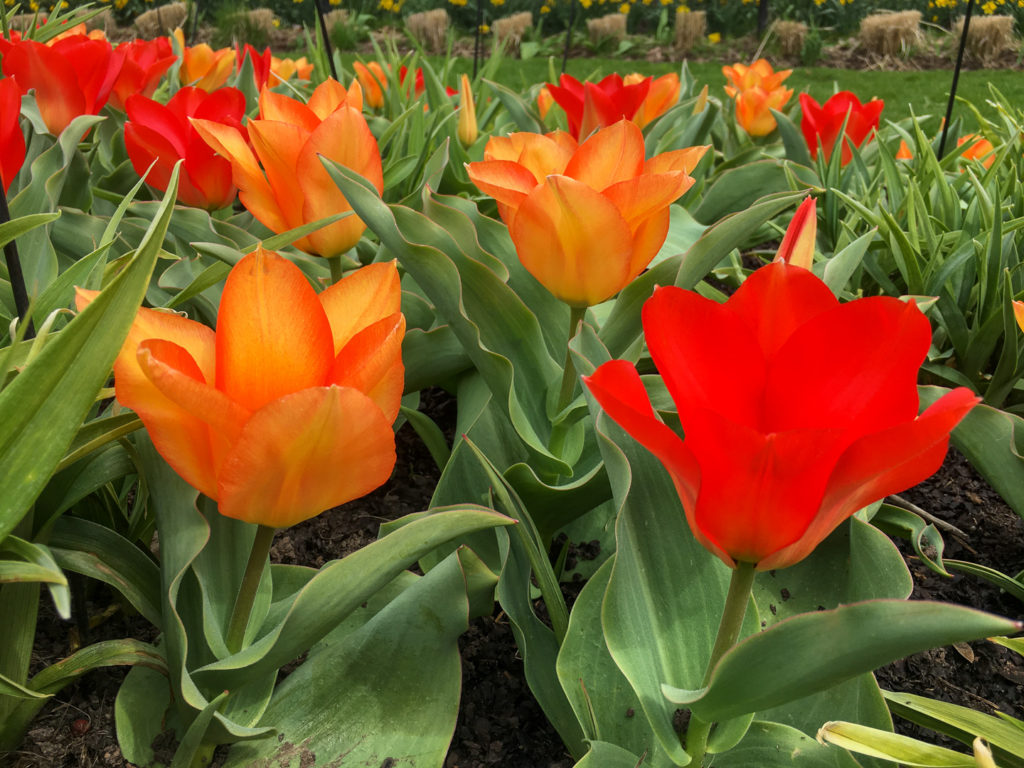
Ideal Partners–Daylilies and TulipsSpring-blooming flower bulbs and summer-blooming daylilies are ideal plant partners, providing two seasons of bloom in the same bed. But there's another important reason they work well together. In spring, when garden beds are bare, daylily foliage fills in early to complement spring's progression of bulb flowers, from daffodils through tulips and alliums. Here, Mark Konlock, horticulture director of Wisconsin's Green Bay Botanical Garden, augmented emerging daylily foliage with the vibrant orange and red color of Colorblends Tulip Blend Apples to Oranges™, which blooms in early-mid spring. The big flowers on short stems–plus tight spacing–make the tulips look like a ground cover among the daylily foliage.
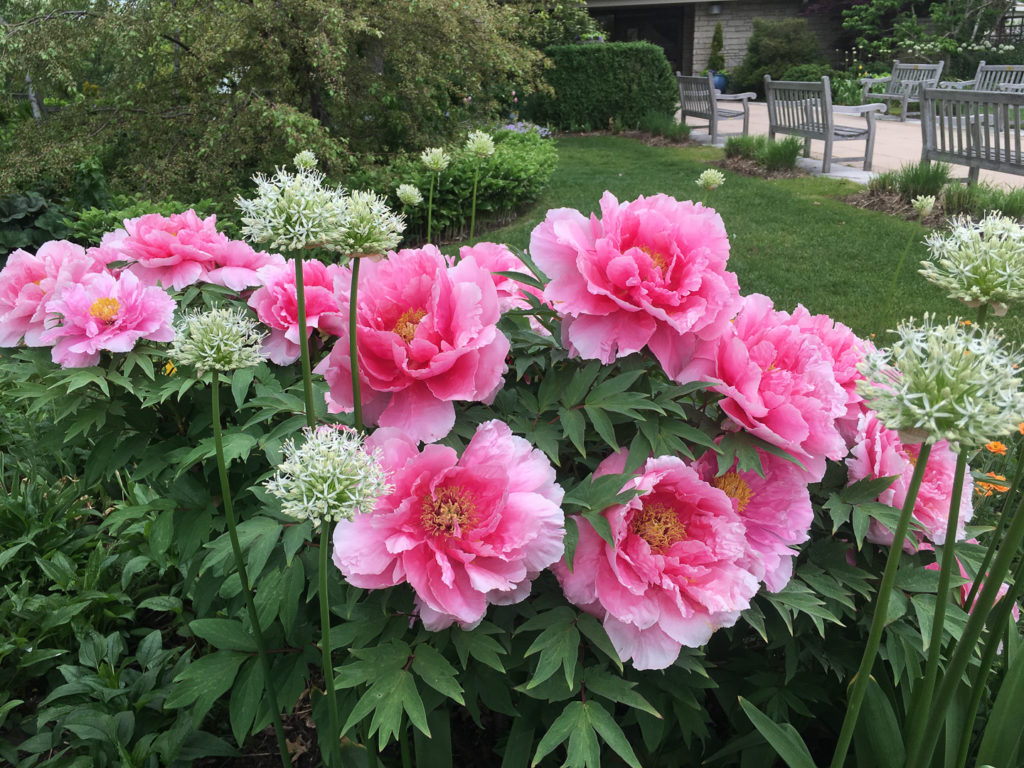
Allium Mount Everest with Pink Tree PeoniesIn the Crescent Garden of the Green Bay Botanical Garden in Green Bay, Wisconsin, Director of Horticulture Mark Konlock combines white Allium 'Mount Everest' with large-flowered pink tree peonies. In a complementary bed across the walkway, hundreds more Allium 'Mount Everest' are planted amidst variegated Solomon's seal. The bed is capped by a canopy of pink, weeping crabapple blooms. Says Konlock, "A good rule of thumb with alliums is 'don't be skimpy!' Alliums are showstoppers during their stretch of bloom in late spring into early summer."
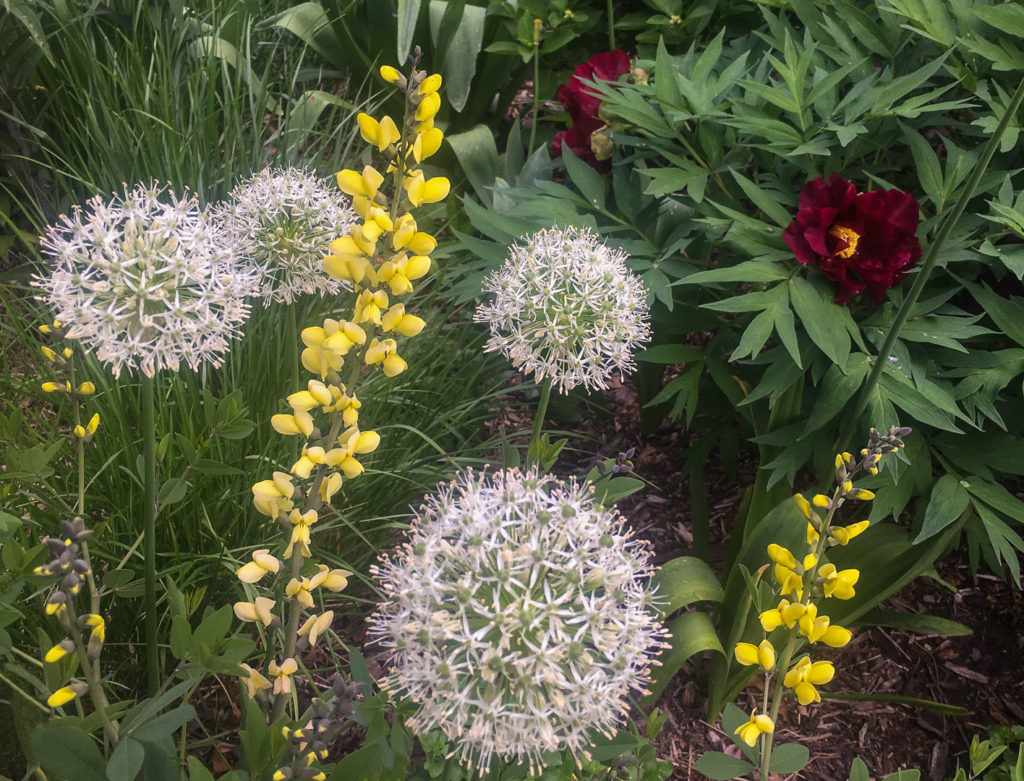
Subtle Repetition of ColorA late spring bloom combination at Green Bay Botanical Garden pairs the bulb flower Allium 'Mount Everest' with two perennials, yellow Baptisia 'Lemon Meringue' and black-crimson Paeonia 'Thunderbolt' (tree peony). GBBG Director of Horticulture Mark Konlock says, "The flowers are quite different in form and color, but surprisingly pleasing in combination due to subtle repetition of the yellow color of the Baptisia flowers and the anthers of the peonies and the alliums.
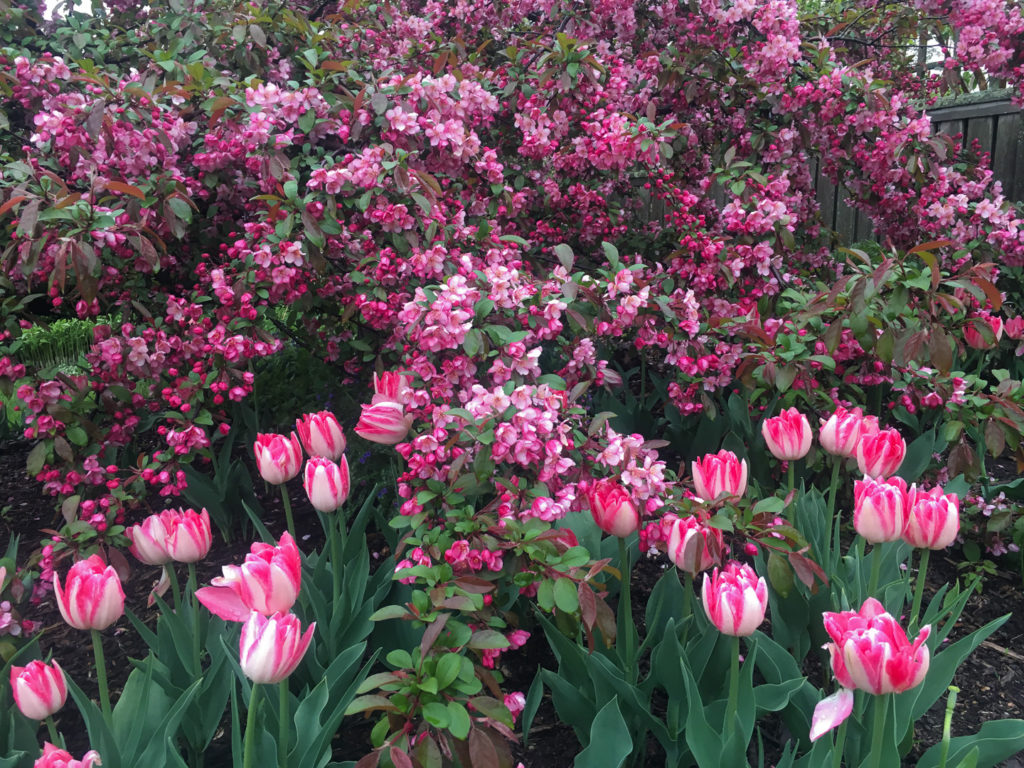
Pink Tulips and Crabapple Blossoms"Playing with layers of color is an effective way to amplify the impact of spring bloom," says Mark Konlock, director of horticulture at Green Bay Botanical Garden in Wisconsin. His pairing of two-toned pink tulips with similarly two-toned pink crabapple blossoms heightens the beauty of each. "Flower scale also plays in," says Konlock. "The large tulip flowers are more dramatic against the backdrop of small crabapple blossoms."
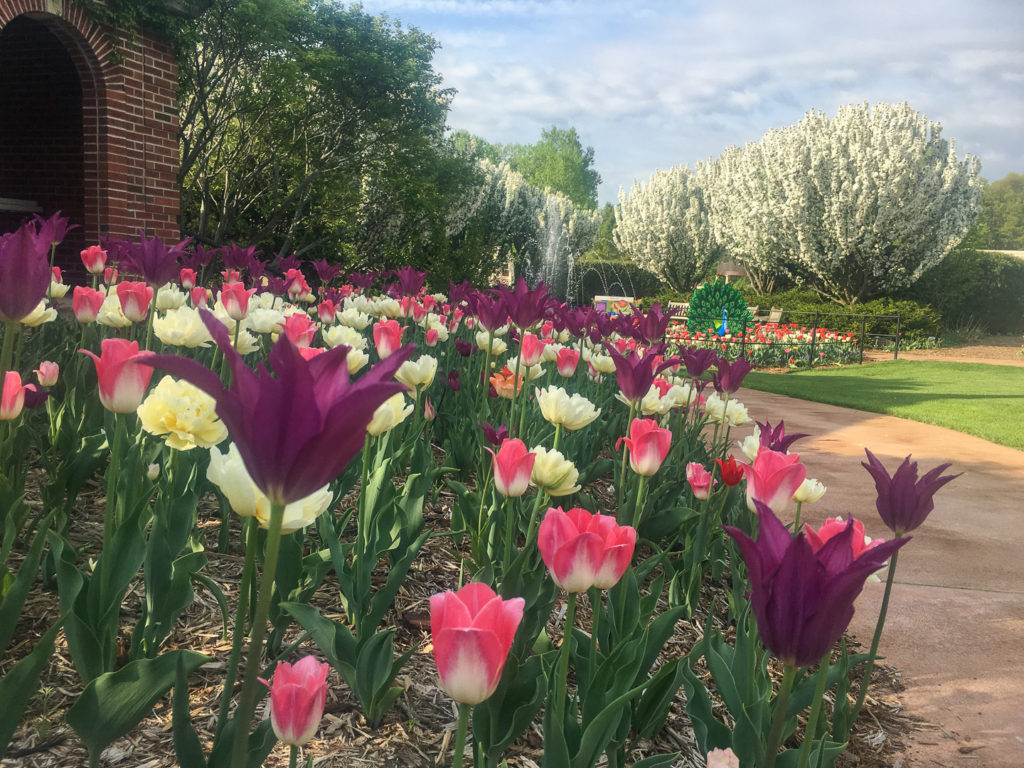
Dynamic Entrance Display"Big, colorful spring bulb displays are crowd pleasers." says Mark Konlock. Each fall, he and his team plant Colorblends tulip blends in GBBG's most prominent beds. Here, the pink, white and purple tulips of Colorblends Tulip Blend Much Niceness® anchor one side of the entrance walkway, while Adirondack crabapple trees hold down the other.
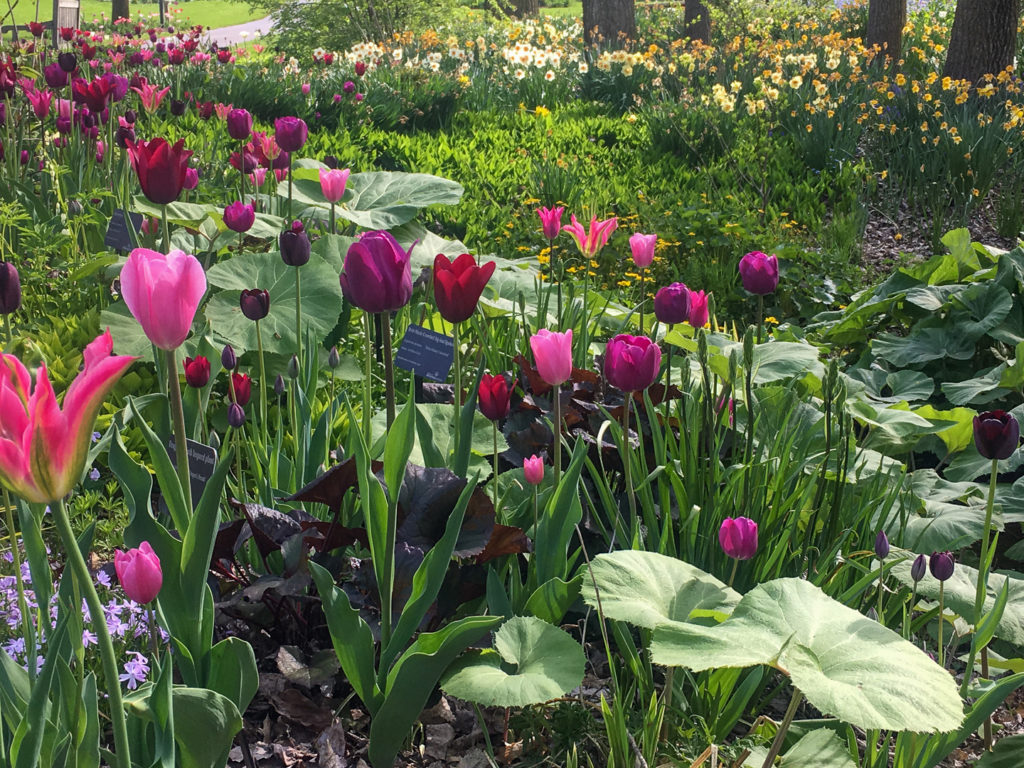
Colorblends Tulip Blend Pinotage™ and PerennialsSpring color pleases strollers along a popular walk in Wisconsin's Green Bay Botanical Garden. Highlight of the planting scheme is Colorblends Pinotage™ tulip blend which features six tulip varieties in shades of maroon, pink, mauve-pink, burgundy, and pink flushed with green stripes. "Pinotage provides weeks of color in the mid-late to late bloom season." says GBBG's Mark Konlock. He planted the tulips in informal clusters among early-emerging perennials to create a loose band of color along a gentle woodland swale. On the opposite side, late-blooming daffodils are seen. Featured perennials include dark-leaved Ligularia 'Britt Marie Crawford', purple-flowered moss phlox, large-leaved Japanese butterbur, yellow marsh marigold and Camassia.
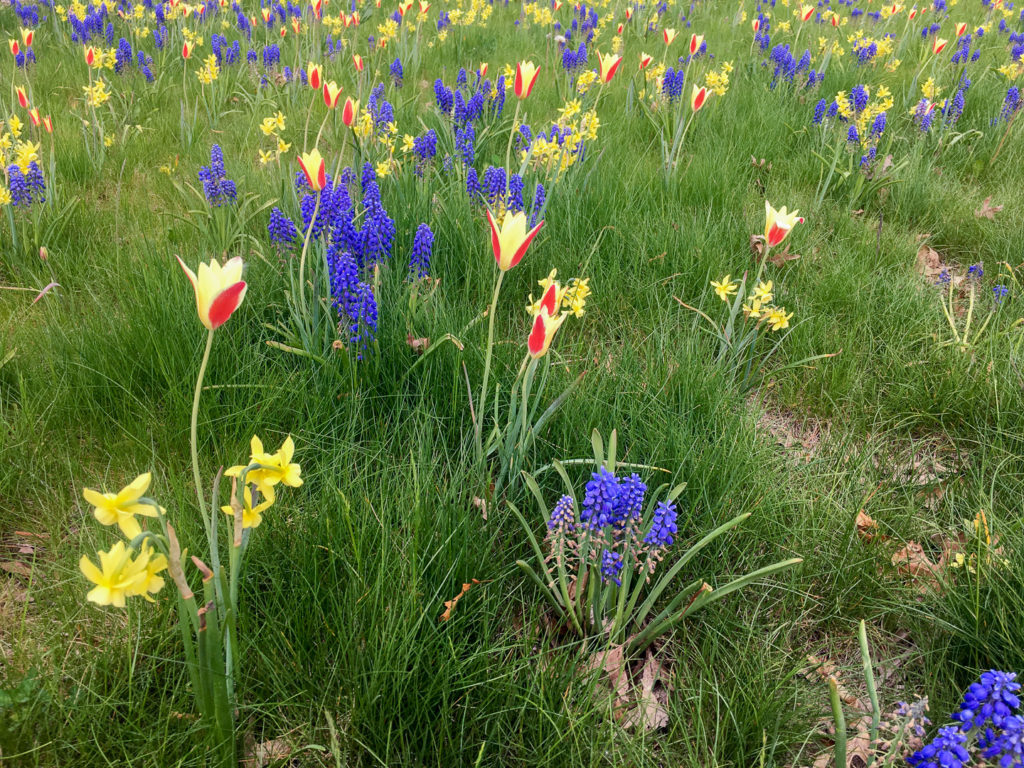
Naturalized Spring Bulbs in No Mow GrassSpring-blooming flower bulbs planted into the grass transform a rough, un-mown area situated just outside the entrance to the Green Bay Botanical Garden in Green Bay, Wisconsin. "Previously, this high profile area set the wrong tone, especially in spring, as visitors arrived." says Mark Konlock. "To turn things around, we planted a spring wildflower meadow. The bulbs are positioned randomly, as if spread by nature. Visitors love the effect."
Three mid-season bulbs are featured: red-and-yellow Tulipa 'Tinka', cobalt blue Muscari armeniacum and yellow Narcissus 'Hawera'. After bloom, the slender bulb leaves die back discreetly, blending into the grass. For a similar wildflower effect featuring 10 varieties of tulips, daffodils and grape hyacinths, see Colorblends Wild Tulip Blend Aladdin's Carpet®.
Three mid-season bulbs are featured: red-and-yellow Tulipa 'Tinka', cobalt blue Muscari armeniacum and yellow Narcissus 'Hawera'. After bloom, the slender bulb leaves die back discreetly, blending into the grass. For a similar wildflower effect featuring 10 varieties of tulips, daffodils and grape hyacinths, see Colorblends Wild Tulip Blend Aladdin's Carpet®.
